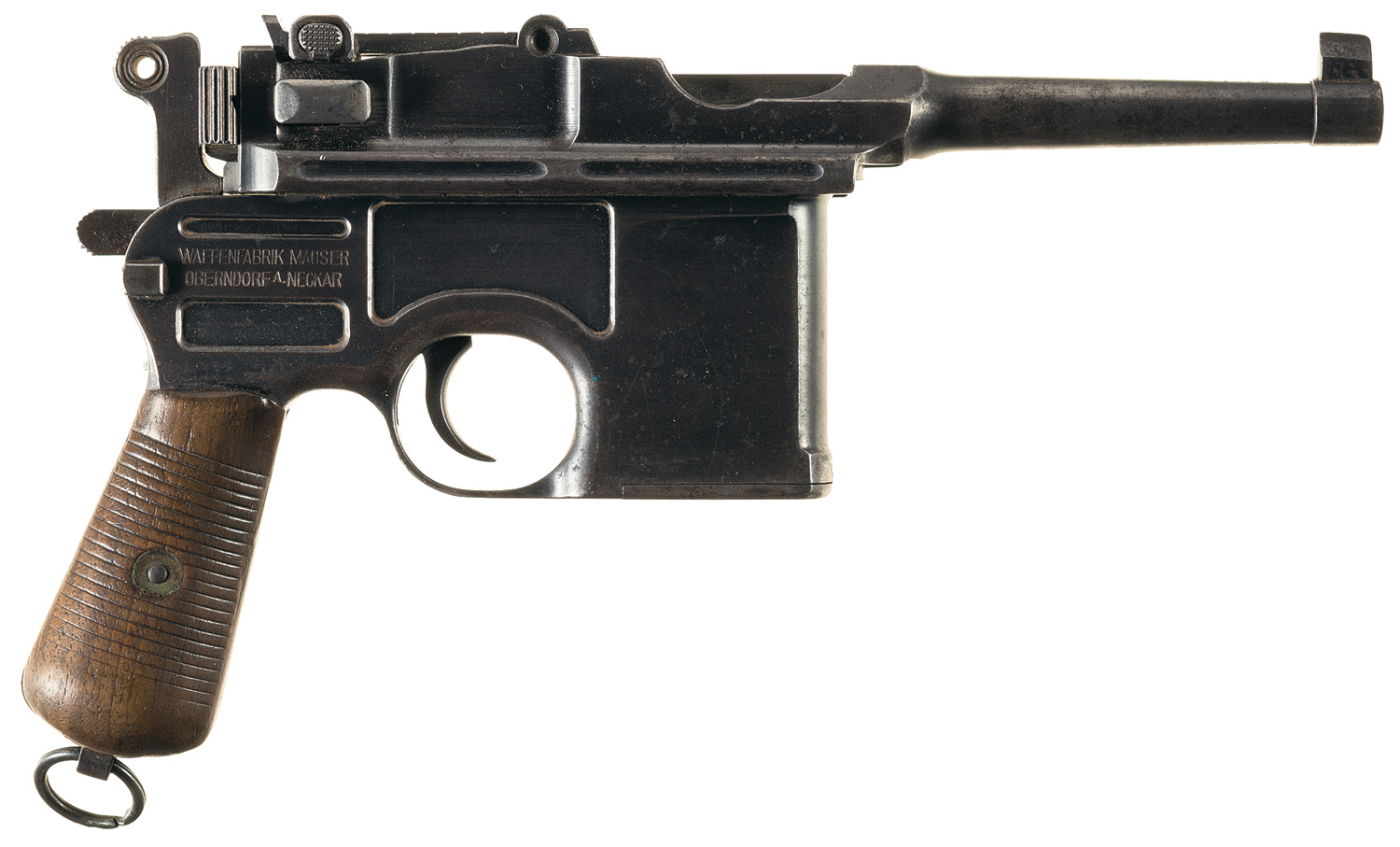

During World War I, nearly 140,000 of these, chambered in 9mm, were built for German forces. Image: SA-Kuvaĭuring this period, demand for the Mauser pistol was high, particularly in China. The original C96 pistol was expensive, and several Spanish manufacturers seized the opportunity to make copies. The Royal/ETAI was the first to appear during 1926. These pistols were dead-ringer lookalikes, but with rather crude mechanics compared to the Mauser originals. The Royal pistols started out as semi-auto designs, and then were quickly upgraded to select-fire weapons. The Mauser C96 pistol chambered in 7.63x25mm Mauser.

The Mauser pistol became so popular in China that the C96 was copied in Chinese arsenals, with the Chinese “Type 17” seeing the C96 pistol chambered in. The C96 could be found in use during the Russian Civil War, the Irish Rebellion and Civil War, the Mexican Revolution, the Finnish Civil War, the Polish-Soviet War, the Communist uprisings in Germany, the Gran Chaco War, the Spanish Civil War, and the many conflicts in China in the hands of warlords, communists, and ultimately during the Japanese invasion of Manchuria in 1931. Image: Author’s collection Onward and UpwardĪfter World War I, the Mauser pistol was busier than ever. Its use in the Great War further enhanced its reputation. The Mauser C96 was already famous by the time World War I began. Even with so many taken on by the German military, the Mauser pistol was never officially adopted by German forces. Most of these are distinguished by a large red “9” cut and painted into the broom handle pistol grip. During the Great War approximately 137,000 C96 pistols were chambered in 9mm. Slow deliveries of the Luger P08 forced the Germans to turn to the next best thing. Army Ordnance Museumĭuring World War I, the C96 gained even more fame as a substitute-standard pistol for the Kaiser’s Imperial forces. The Mauser C96 pistol was a truly revolutionary design at the time of its release. Nicknamed “The Broomhandle,” its powerful 7.63mm cartridge and ten-round magazine were far in advance of almost any pistol of the pre-WWI era. Some even found their way into the last days of the Old West. The C96 could be found around the world in conflicts both public and private, in the hands of military men, revolutionaries, criminals and lawmen. Until the Great War, officers of many nations decided to acquire the Mauser pistol on their own - much like Winston Churchill had done in 1898, during the Boer War. The M1932 was the Mauser-made select-fire, detachable magazine version of the C96 pistol. By World War I, the Mauser pistol was internationally famous, but it had not been officially accepted by any nation as its primary pistol. First manufactured in 1896, the C96 was originally designed for police use but ended up as the first truly successful military automatic pistol. Through the first half of the 20 th century, the Mauser C96 Pistol was an icon among firearms.


 0 kommentar(er)
0 kommentar(er)
